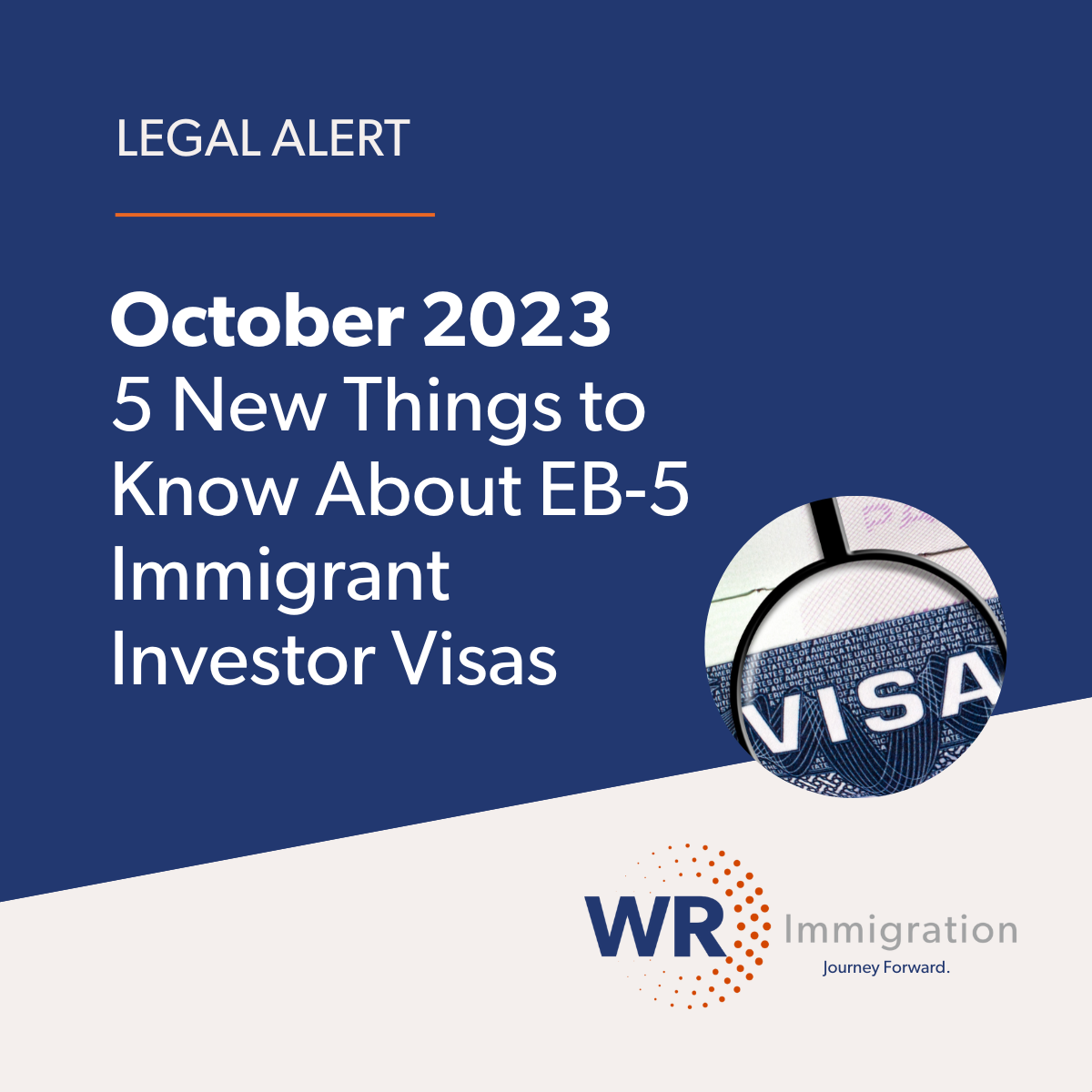By: Joseph “Joey” Barnett
There has been a lot of activity in EB-5 in the past month, including updated policy guidance by U.S. Citizenship and Immigration Services (“USCIS”) and visa processing information from the U.S. Department of State (“DOS”).
Here are five new things to know about EB-5 in October 2023.
1. Sustainment Period
USCIS issued guidance interpreting the EB-5 Reform and Integrity Act of 2022 (the “RIA”) to indicate that, for investors who file the new Form I-526E after the RIA, the sustainment period – the amount of time EB-5 investment capital must remain “at risk” – is only 2 years from the date that “the full amount of qualifying investment is made to the new commercial enterprise and placed at risk under applicable requirements, including being made available to the job creating entity, as appropriate.” This may drastically change the EB-5 market, as USCIS appears to no longer require that the investor sustain their investment throughout the entire conditional residence period, even if the applicable regulations at 8 C.F.R. § 216.6 appear to still require it. For pre-RIA investors, the “sustainment” period remains the first two years of conditional residency. This guidance may be welcomed by some investors but the critical question many investors want to know is when they can their money back and this is governed by the contractual investment or subscription agreement, not the USCIS guidance which merely impacts the green card process.
2. Faster I-526E Processing
USCIS appears to have separate adjudication teams for post-RIA Form I-526Es, that are adjudicating cases faster. Our firm has received Form I-526E approvals in as short as 3 months for investments in some rural projects, and several regional centers report that USCIS is adjudicating Form I-526Es in about 12-13 months for investments in their high unemployment area projects. USCIS clarified that it must first approve the Form I-956F “project template” filed by the Regional Center before adjudicating the Form I-526E filed by an individual investor in that project. Prospective investors are now asking Regional Centers about Form I-956F adjudications before making investment decisions.
3. EB-5 Visa Wastage in FY 2023
DOS reported that the total issuance of unreserved visa numbers in FY 2023 likely exceeded the annual limit of approximately 9,500, with a large majority being issued by consulates/embassies abroad, and another approximately 1,500 used through adjustment of status applications by USCIS.
4. Record High EB-5 Visa Numbers in Fiscal Year “FY” Ending September 2024
There will be more EB-5 visas available for use in FY 2024 than ever before, an estimated 20,000 investor green cards will be available due to the visa “carryover” provisions in the RIA. Because of delayed adjudications, reserved visas from FY 2022 weren’t used in FY 2022 or FY 2023 and are now part of the unreserved FY 2024, and the reserved visas from FY 2023 weren’t used in FY 2023 either and now carry over to the reserved FY 2024. The overall outlook for EB-5 is very positive in FY 2024, and we expect the reserved visa categories to remain “current” in the Visa Bulletin for at least the next half year, and possibly throughout FY 2024 ending September 2024. Some US consulates need to be more efficient in scheduling interviews and issuing immigrant visas through the entire fiscal year, as opposed to waiting until the last few months in the FY to schedule green card appointments.
5. Relief for Pre-RIA Investors in Regional Centers Terminated for “Administrative Noncompliance”
USCIS’ recent guidance appears to provide some relief to certain pre-RIA investors who invested in projects associated with Regional Centers that no longer wish to remain designated under RIA’s updated rules. While it remains unclear what actually constitutes “purely administrative noncompliance,” USCIS states that pre-RIA investors may, in certain situations, remain eligible for green cards based on indirect jobs created, that are applicable to their petition before the RIA was enacted, notwithstanding the termination of their associated regional center. It appears USCIS plans to terminate Regional Centers that do not pay the required EB-5 Integrity Fees or timely file the required Form I-956G this year, and this guidance appears designed to protect immigrant investors in such situations. It remains to be seen how this will actually work in practice but gives hope to some investors where their Regional Centers are terminated.
For more information register here for Chatting with Charlie OPPENHEIM EB-5 Update on December 13, 2023.
Charlie OPPENHEIM is the former Director of Visa Control for the US Department of State and is Director of Visa Consulting at WR Immigration, a global law firm with 9 offices.


